This article is part of Windpower Engineering & Development’s April 2017 issue. A complete digital version of the issue is here.
Most companies and inventors that develop viable ideas or products patent them to keep their financial benefits to themselves. But one guy from Denmark thinks that if you make a good idea public, a hundred other minds can easily improve on it and thereby benefit a wider number of people. Maybe a whole nation. Maybe more.
In this case, the guy is Henrik Stiesdal, a former chief technology officer of Siemens, where he spent 27 years improving wind turbines, and the idea that he made open source is one for a floating foundation, in the illustration. It is a recent and potentially inexpensive design for a floating wind-turbine platform. More on his offshore platform idea is here: http://tinyurl.com/wpe-stiesdal
You might think that growing up on a windy farm is a requirement for wind pioneers. It has inspired others in previous Innovator sections and it worked for Stiesdal. After leaving the family farm, his early wind industry work turned into what some call the Danish Concept: an upwind rotor on a nacelle with automatic yawing, and two-speed stall-regulated turbines (two generators, for high and low-speed winds) with fail-safe systems. This setup is still found on a few refurbished turbines. An early prototype in 1991 was rated at 30 kW.
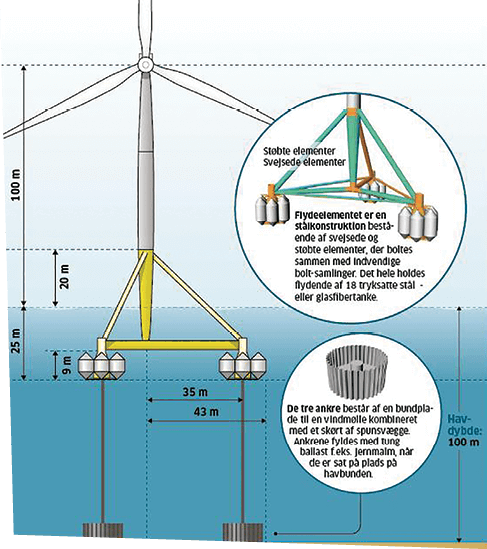
Stiesdal has applied for no patents on this floating foundation. Anyone who can improve on it is welcome to try.
“The Siemens claim to fame is that we have developed a simple and easy-to-industrialize machine that could significantly bring down energy costs,” said Stiesdal, while at the company. He is also responsible for Siemens’ success with its direct-drive turbines, most of which are assigned to work offshore because of their improved reliability over conventional wind turbines.
Stiesdal’s other significant credits include the Vindeby Wind Farm, the world’s first offshore wind farm, and development of the IntegralBlade manufacturing method which casts blades in one piece, eliminating the weak spots of previous methods. And later, the CombiStall blade, a wind load regulation scheme, and first variable-speed turbine for Bonus Energy A/S.
He is now president of Stiesdal A/S, and still developing creative wind-turbine ideas. For instance, at a recent AWEA offshore event, he presented his latest design for a floating foundation. Called TetraSpar, the design is built from components borrowed from industry, and already in production, such as cylindrical welded braces and cast nodes from tower technology, and steel tanks from several industries. Stiesdal’s Wikipedia bio says he holds more than 650 patents related to wind-power technology, not bad for a kid inspired by the wind on the family farm.
Filed Under: Innovators & influencers

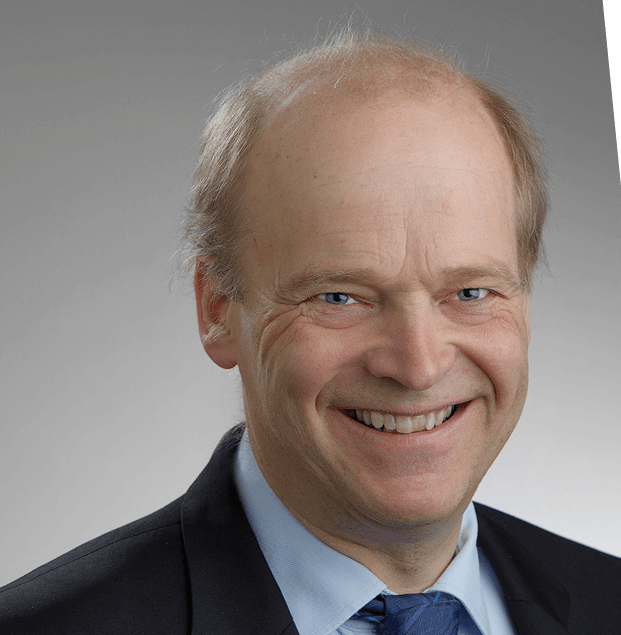
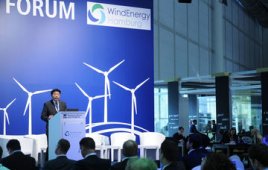
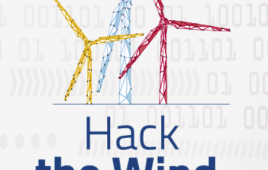
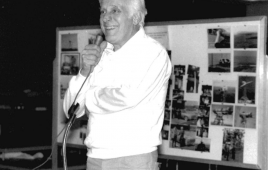
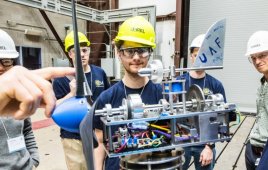
DOE provided 39 MUS$ with thanks to develop a “Concept” for floating wind turbines.
Would appreciate publishing the technical results for improving the FloatNRG.com system and for posterity.
ABSTRACT
The “floating Energy System” (FloatNRG) extracts offshore energies from; sea waves, ebb/tidal currents, solar, thermal and wind as one coordinated system. Wave potential, kinetic and horizontal energies are extracted from wave front and lee sides The FloatNRG system is of modular construction, completely assembled at the shore line on a floating “Tension Leg Platform” (TLP), floated and towed to location ready for anchoring to the sea bed beyond 30m depths ready for operation. For each 6MW wind turbine the (TLP) consists of submerged fixed floats with a foot print of 1,600 square meters, handles waves up to 8m high and storms with wind speeds up to 240 Km per hour develops resisting moments up to 56,525 ton-meters and an output of 1,779,393 Kwh/year and volume of 2,217 cubic meters for energy storage as compressed air
(DOE) has many similar departments, each working independantly of the other and seeking the same consulting “Concept” services. It would be wise to coordinate their activities.
Proposed systems descriptions are of commersi nature without technical content.
Our investigation confirm that the proposed floating wind turbine supports are not practical and poor engineering.
For full description inspect FloatNRG.com system